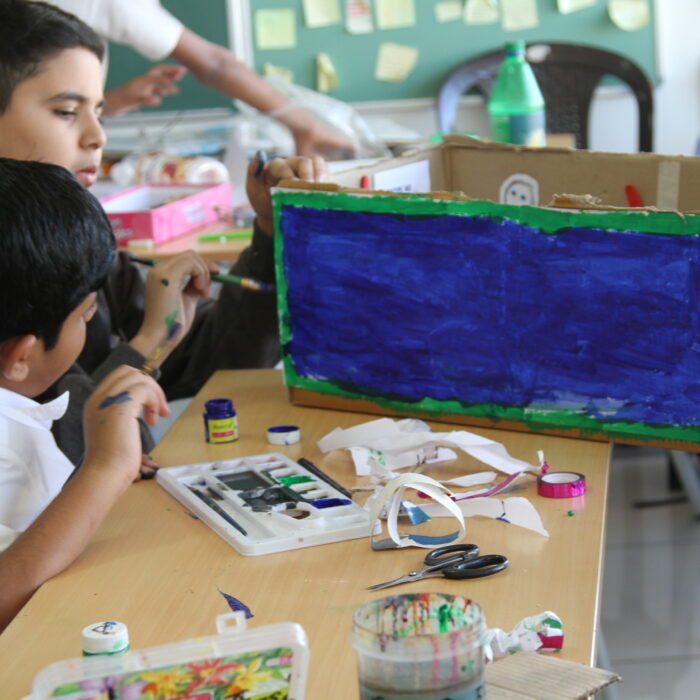EKYA/10 October 2024 Posted by : EKYA Schools
Transforming Challenges into Opportunities: Ekya’s Design Thinking Approach
"If there are challenges thrown across, then some interesting, innovative solutions are found. Without challenges, the tendency is to go on the same way." — Ratan Tata
Today, we take a moment to honor the enduring legacy of Ratan Tata—a visionary who saw challenges not as roadblocks, but as stepping stones to innovation and resilience. His wisdom teaches us that obstacles can be powerful catalysts for creativity and progress. At Ekya Schools, we are deeply inspired by this philosophy and integrate it into our design thinking approach. Here, students are nurtured to see beyond the immediate difficulties, learning to transform challenges into opportunities through a compassionate and methodical process. This journey not only equips them with the tools to innovate but also instills a mindset of empathy and possibility, echoing Tata’s timeless influence on how we approach the world.
Challenges aren’t just obstacles—they are the driving force behind innovation and progress. Without challenges, there would be no push to think differently, no spark to ignite creativity and no impetus for finding solutions that can transform the world. At Ekya, we understand that embracing challenges is the first step towards discovering innovative solutions that make a difference.
Understanding Design Thinking
Design thinking is an iterative process that focuses on understanding the user, challenging assumptions, and redefining problems to identify alternative strategies and solutions. It is a solution-based approach to problem-solving that encourages innovation and creativity.
Step 1: Empathize
The first step in the design thinking process is empathy. At Ekya, students are encouraged to immerse themselves in the lives and experiences of those they are designing for. This involves active listening, observing, and engaging with the community to gain a profound understanding of their needs and challenges. By developing empathy, students are better equipped to create solutions that truly resonate with the users.
Step 2: Define
Following empathy, the next phase is to define the problem clearly. Students synthesize their insights into a problem statement that is human-centered. This statement serves as a guiding star throughout the design process, ensuring that all efforts are aligned towards addressing the core issue. A well-articulated problem statement not only clarifies the challenge but also inspires innovative thinking.
Step 3: Ideate
With a clear understanding of the problem, students enter the ideation phase. This is where creativity flourishes. Students are encouraged to generate a wide array of ideas, embracing wild and unconventional concepts. The aim is to explore as many solutions as possible without immediate judgment. This phase harnesses the power of brainstorming and collaborative thinking, often leading to unexpected and groundbreaking ideas.

Step 4: Prototype
Prototyping is the stage where ideas begin to take tangible form. Students create simple and cost-effective models of their ideas, allowing them to explore how their solutions might look, feel, and function in the real world. Prototypes can be anything from sketches and physical models to digital simulations. This hands-on approach is crucial for testing assumptions and gathering feedback early in the process.

Step 5: Test
Testing is an integral part of the design thinking cycle. Students present their prototypes to users and stakeholders to gather feedback. This phase is iterative, as it often reveals insights that lead to further refinement and improvement of the solution. Testing not only validates concepts but also fosters resilience, teaching students that failure is a stepping stone to success.

Reflection and Iteration
At Ekya, reflection and iteration are key components of the design thinking process. Students are encouraged to reflect on their experiences, learn from their mistakes, and continuously refine their solutions. This culture of ongoing improvement nurtures adaptability and resilience, equipping students with the skills to tackle complex challenges in dynamic environments.
The Impact of Design Thinking at Ekya
Ekya’s commitment to design thinking empowers students to become proactive problem solvers. By engaging with real-world challenges, they develop critical thinking, creativity, and empathy—skills that are essential for success in today’s fast-paced world. Students learn to approach problems with an open mind, ready to explore multiple angles and possibilities.
Design thinking at Ekya is more than just a methodology; it is a mindset that embraces challenges as opportunities for growth and discovery. By instilling empathy, creativity, and resilience in our students, we prepare them to navigate the complexities of the modern world with confidence and ingenuity. Every challenge is a chance to innovate, to learn, and to build a better future.
